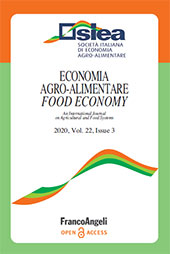Insights in overcoming the non-adoption of voluntary agricultural ghg mitigation measures in Ireland
2020 - Franco Angeli
| Artículo | Download | Copia/pega | Impresión |

P. 1-26
Forma parte de
Economia agro-alimentare : XXII, 3, 2020Código DOI: 10.3280/ecag3-2020oa11042
ISSN: 1972-4802